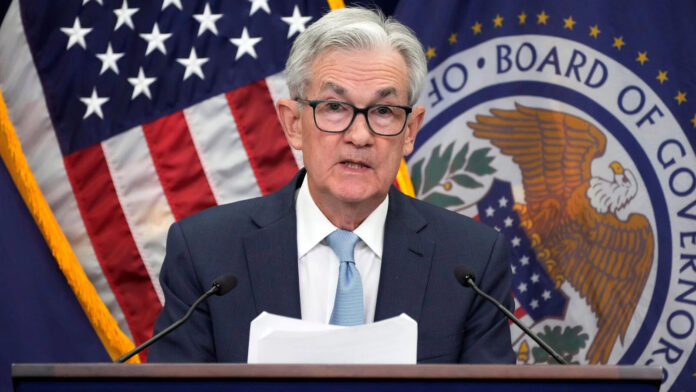Federal Reserve Chair Jerome Powell’s recent congressional testimony hinted at a subtle yet significant change in the central bank’s approach to interest rates. Over two days, Powell indicated a potential shift in the Fed’s strategy, one that could prove more enduring than the pivot that sparked a significant market rally at the end of the previous year. Although his comments didn’t immediately move markets, they suggest a possible long-term change in monetary policy.
Context of Powell’s Testimony
Jerome Powell’s testimony before Congress is a routine event where the Fed Chair updates on the state of the economy and the central bank’s policies. This particular testimony, however, came at a critical time. The U.S. economy has been sending mixed signals: strong job growth and consumer spending alongside persistent inflationary pressures. Powell’s statements were closely analyzed for clues on how the Fed might address these conflicting economic indicators.
The Initial Pivot and Market Reactions
To understand the significance of Powell’s latest shift, it’s essential to revisit the Fed’s previous pivot. Late last year, the Federal Reserve indicated a potential pause in its interest rate hikes, leading to a substantial rally in financial markets. Investors saw this as a move toward a more accommodative monetary policy, driving stock prices higher. However, the economic conditions didn’t align neatly with this dovish stance, leading to ongoing volatility and uncertainty.
Key Takeaways from the Testimony
During his recent testimony, Powell’s comments suggested a more nuanced approach to interest rate policy. Key takeaways indicating a shift in the Fed’s framework include:
1. Data Dependency: Powell emphasized the Fed’s commitment to a data-driven approach. While this is not new, the emphasis on tying future rate decisions to incoming economic data was notable. This suggests a more flexible and responsive policy approach, rather than adhering strictly to pre-set targets or timelines.
2. Inflation Concerns: Powell acknowledged the persistent inflationary pressures despite previous rate hikes. He noted that while inflation has shown signs of moderating, it remains above the Fed’s target level. This indicates the Fed’s readiness to adjust policies if inflation does not continue to decline.
3. Labor Market Dynamics: Powell highlighted the strong labor market, noting robust employment levels. However, he pointed out that wage growth has not kept pace with inflation, which could impact consumer spending and economic growth in the long term. Balancing employment and controlling inflation appears to be central in the Fed’s evolving policy framework.
4. Global Economic Conditions: Powell referenced the impact of global economic conditions on the U.S. economy, mentioning geopolitical uncertainties, trade tensions, and the economic policies of other major economies as factors the Fed is monitoring closely. This global perspective indicates a broader scope in the Fed’s policy considerations.
Implications for Future Rate Cuts
Powell’s shift in the rate-cut framework suggests the Fed is preparing to adopt a more cautious and measured approach to future rate cuts. Potential implications include:
1. Gradual Adjustments: Rather than making significant rate cuts in response to short-term economic data, the Fed may opt for more gradual adjustments. This would allow better assessment of the long-term impact of its policies on the economy.
2. Communication Strategy: The Fed’s communication strategy is likely to become even more critical. Clearly articulating its data-driven approach and the factors influencing its decisions can help manage market expectations and reduce volatility.
3. Balancing Act: The central bank will need to balance supporting economic growth and controlling inflation. This could involve a mix of interest rate adjustments and other monetary policy tools to achieve its dual mandate of maximum employment and price stability.
4. Market Reactions: Investors may need to adjust their expectations regarding the timing and magnitude of future rate cuts. The emphasis on data dependency and global conditions means market participants will need to stay attuned to a broader range of economic indicators.
The Path Forward
As the Fed navigates this complex economic landscape, several factors will influence its decisions. The trajectory of inflation, the resilience of the labor market, and the impact of global economic conditions will all play a role in shaping the Fed’s policies.
1. Inflation Monitoring: The central bank will closely monitor inflation data to determine whether current measures are sufficient or if additional actions are needed. Any signs of persistent inflation could prompt the Fed to maintain or increase interest rates to prevent the economy from overheating.
2. Employment Trends: The strength of the labor market will be another critical factor. The Fed will aim to support employment without fueling inflation, which may require careful calibration of its monetary policies.
3. Global Developments: Geopolitical events, trade policies, and the economic performance of other major economies will also influence the Fed’s decisions. A deteriorating global economic environment could prompt a more accommodative stance, while a robust global recovery might allow the Fed to focus more on domestic inflationary pressures.
4. Market Feedback: The Fed will also consider market reactions to its policy announcements. By maintaining clear and consistent communication, the central bank can help ensure that its actions are well understood and that market participants have realistic expectations.
Jerome Powell’s recent congressional testimony marks the beginning of a potentially significant shift in the Federal Reserve’s approach to interest rate policy. Emphasizing a data-driven and nuanced framework, the Fed is preparing to navigate a complex economic environment characterized by mixed signals and global uncertainties. While the immediate market reaction to Powell’s comments was muted, the long-term implications of this shift could be profound, influencing monetary policy and market dynamics for years to come. As the Fed continues to balance the competing demands of economic growth and inflation control, its evolving framework will be crucial in shaping the future trajectory of the U.S. economy.
Disclaimer: The thoughts and opinions stated in this article are solely those of the author and do not necessarily reflect the views or positions of any entities represented and we recommend referring to more recent and reliable sources for up-to-date information.



